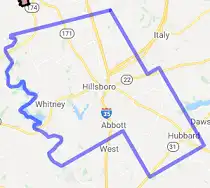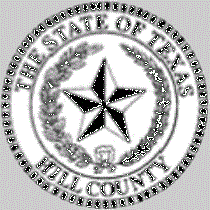Loading Data
Find USDA Eligible Properties in Hill County
 browse list of realtors working in Hill County
browse list of realtors working in Hill County
Hill county has 1 usdaproperties.com realtor ready to help with your search!
| April Featured Agent | |
|---|---|
| Joe Reed | from Weichert, REALTORS - The Eastland Group |
Looking to buy in Hill County, Texas?
There are 112 USDA backed residential loans in Hill county with an average loan balance of $100,144. Over 81% of the loans helped first time home buyers. Borrowers were an average age of 39 years old. The typical appraised home value was around $103,233. On average the rural home size purchased with this loan was approximately 1,612 SqFt. Hill county applies the standard USDA income limits to determine loan eligibility. For a household of upto 4 people the income limit is $90,300. For a household of between 5 and 8 people the income limit is increased to $119,200.
The size of Hill County is roughly 2,551 square kilometers. There are no geographical USDA loan restrictions in this county. The influence score for Hill County is 6. Look below for the interactive county level map illustration below for more details.
Select from the list of cities below or use the search feature to find active property listings in a city where you would like to live.
Start your search for USDA loan eligible properties in the cities of Hill County, TX ![]()
* cities most likely to have USDA loan eligible properties for sale.
*Abbott • *Aquilla • Birome • *Blum • Brandon • *Bynum • Chatt • *Covington • Files Valley • *Hillsboro • *Hubbard • Huron • Irene • *Itasca • Lovelace • *Malone • Mayfield • Menlow • *Mertens • *Mount Calm • Osceola • *Penelope • Peoria • Vaughan • *Whitney • Woodbury
A USDA loan is a mortgage option available to eligible homebuyers that is sponsored by the United States Department of Agriculture to promote homeownership in rural communities. USDA Loans, sometimes called "RD Loans," offer 100% financing options on eligible rural properties. USDAProperties can help you find USDA properties in Hill County.
View the detailed USDA boundaries and read about general conditions of
Hill County, Texas
 .
.Hill County, located in the great state of Texas, has a rich historical background that contributes to its distinct identity. Established on February 7, 1853, and named after George Washington Hill, the county's land initially belonged to the indigenous inhabitants, primarily the Wichita and Tonkawa tribes. However, following the Treaty of Bird's Fort in 1843, the natives were forced to vacate the area, making room for white settlers.
The first significant wave of settlers arrived in the 1850s, many of whom were from the southern states - these were primarily families like the Ellis, Wills, and Erwin, who established the first communities in the county, such as Osceola, Peoria, Union Bluff, and Covington, among others. Hill County was primarily an agricultural community, growing cotton and raising livestock. As more people settled in the area, new towns and communities developed, leading to its flourishing.
During the Civil War, Hill County leaned towards the Confederacy, but its residents remained somewhat divided on the issue. Railroads also played a crucial role in the county's growth, with transportation lines including the Cotton Belt, Missouri, Kansas and Texas, and other railroad systems facilitating commerce and trade.
A fun fact about Hill County is that in 1896, the Farmers' Alliance led a nationwide demonstration called "The Big Pull," attempting to break the world plowing record. The event took place in Hillsboro, the county seat, attracting thousands of spectators and putting the small town of Hillsboro in the spotlight.
Featured Cities of Texas







